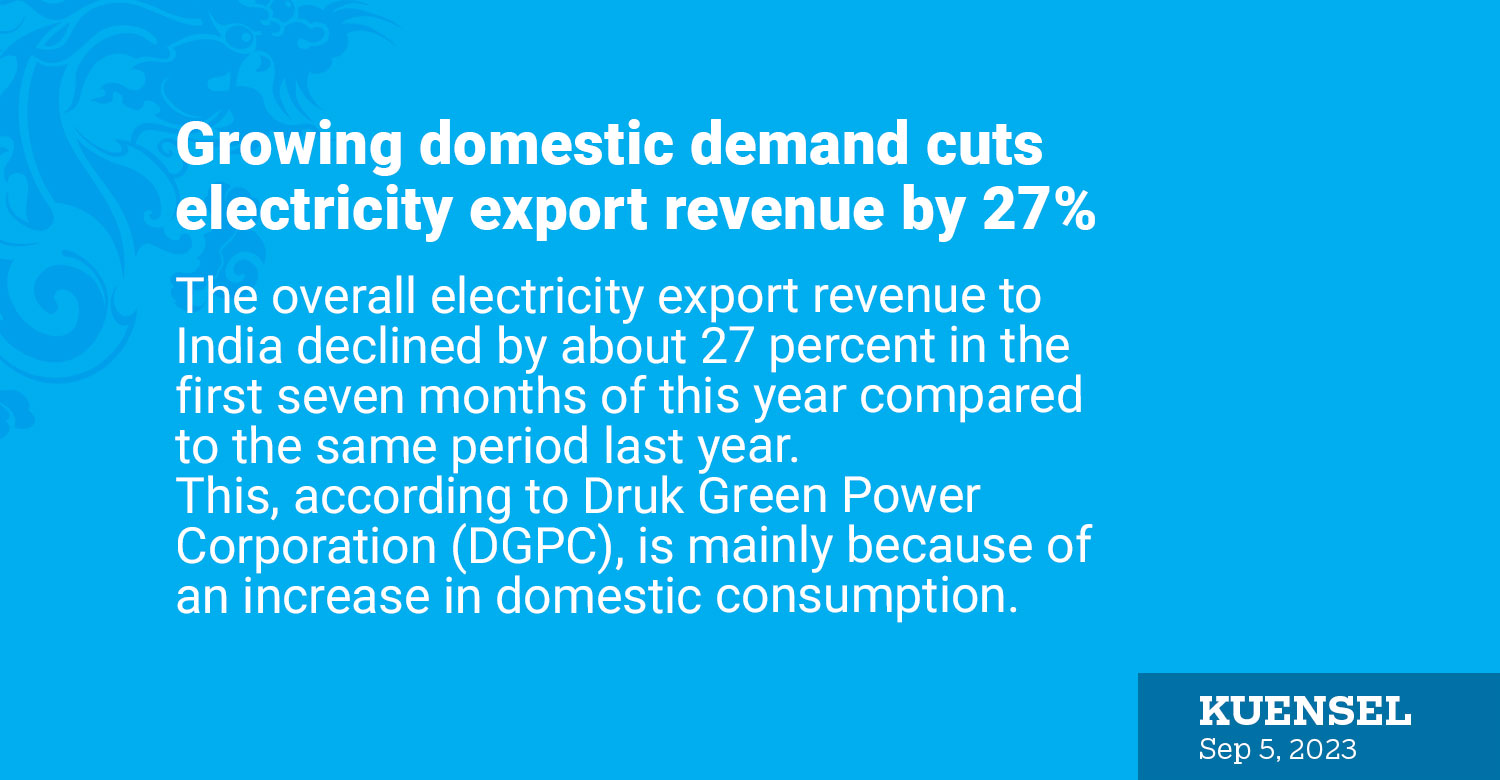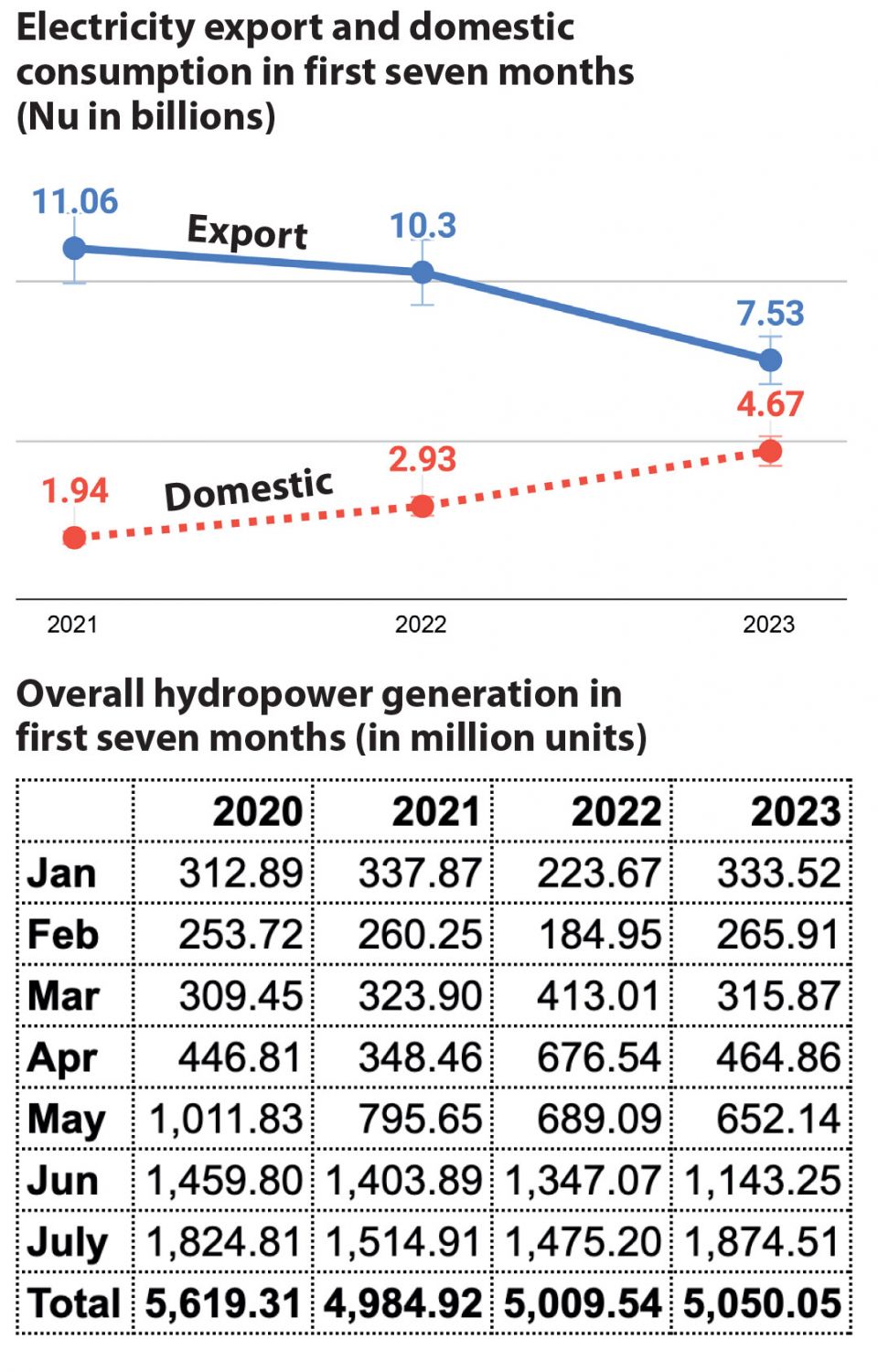
The overall electricity export revenue to India declined by about 27 percent in the first seven months of this year compared to the same period last year.
This, according to Druk Green Power Corporation (DGPC), is mainly because of an increase in domestic consumption.
Bhutan exported Nu 7.53 billion worth of electricity in the first seven months of this year against Nu 10.3 billion in the same period last year. In 2021, the country exported Nu 11.06 billion worth of electricity during the same period.
Conversely, domestic electricity sales increased by about 60 percent this year from the same period last year. In figures, Nu 4.67 billion worth of electricity was consumed domestically this year compared to Nu 2.93 billion last year.
There was also a slight increase in the overall hydropower generation, by about 1 percent during the same period. The hydropower generation was recorded at 5,050.05 million units (MU) of electricity in the first seven months this year against 5,009.54 MU last year.

DGPC’s managing director, Dasho Chhewang Rinzin, said that the hydropower generation until July this year was below the projection because of a “very dry winter” and a slow start of the monsoon.
“Unless there is a late trailing monsoon rain at the end of September or the beginning of October, it is not expected that the actual generation will be anywhere near the projection for the year,” he said.
Dasho Chhewang Rinzin said that domestic demand had been increasing with an increasing domestic revenue from the sale of electricity to Bhutan Power Corporation.
However, he said that there is an equivalent lower export in electricity as the quantum of generation remains almost the same although dependent on hydrology. “Considering that export tariffs are higher than domestic generation tariffs, there is an overall decreasing trend in revenues accruing to the DGPC and the power plants.”
Bhutan also had to import about 50 percent more electricity this year. Bhutan purchased 367 MU of electricity worth Nu 1.73 billion for four months from January to April.
Electricity generation, Dasho Chhewang Rinzin said, depends mainly on the hydrology and on the availability of generating units, as in the case of 2022 when the Tala power plant had to be shut down from January to mid-March for inspection and rectification of the underground head race tunnel.
He added that there would not be much changes in the inflow patterns in the foreseeable future.
However, in the long-term, Dasho Chhewang Rinzin said that the winters might be drier while the monsoons will be more intense due to climate change.
To meet the growing domestic demand and to ensure Bhutan’s energy security, he said that the power sector is considering prioritising reservoir and pumped storage projects in future, a move away from the current run-of-the-rivers projects. “Emphasis is also being made for diversifying investments into other renewables, especially solar in the short term. Solar hydro hybrids are a viable solution for energy security with the falling costs of solar.”
The 118-megawatt (MW) Nikachhu is expected to be commissioned by the end of 2023 and 1,020MW Punatsangchhu-II is expected to come online by the later part of 2024.
Dasho Chhewang Rinzin said that a number of small hydropower projects, which are presently under construction, should be ready by 2025.
The hydropower plants under DGPC include Tala, Kurichhu, Chhukha and Basochhu. The other plants are Mangdechhu and Dagachhu.












